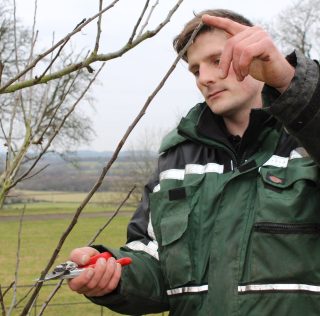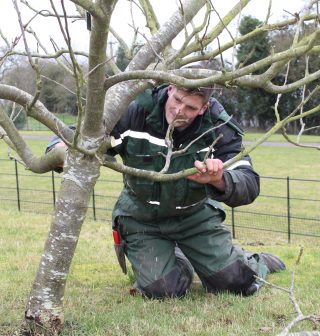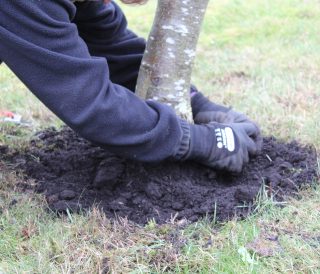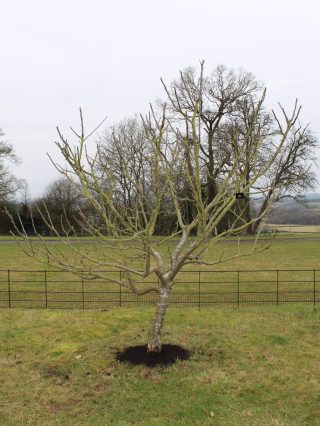Pruning Fruit Trees
All our fruit trees were planted as standards or half-standards when the orchard was created in 2008. There is a variety of stone fruit as well as apple, pear and quince trees. While stone fruit are pruned in the summer (July to August) to reduce the spread of the fungal silver leaf disease, apples, pears and quince are pruned in the winter (January to March). In the early years, the trees were shaped into the ideal ‘goblet’ structure by removing central branches. This open structure promotes the circulation of air and the absorption of light.
Fruit trees flower on branches grown in the previous year. In order to encourage the tree to concentrate its efforts on only a few fruits per branch, the previous year’s growth is reduced to three to five buds.

As trees mature, we sometimes have to remove older branches to allow for younger, more productive growth. This is done with a clean, sharp pruning saw rather than loppers to prevent bruising, which could cause an infection and thus damage the tree.

Even though grassy orchards look very pleasing, competing with the surrounding grass puts significant stress upon the trees. A solution is to remove the grass from around the base of the tree to create a ‘tree circle’. In order to preserve moisture around the surface roots, a mulch of composted bark is applied to the tree circle. This has the added benefit of preventing weeds and grass from growing.


After pruning, we feed the trees with a slow-release fertilizer rich in potassium in order to increase the quantity and quality of the fruits
